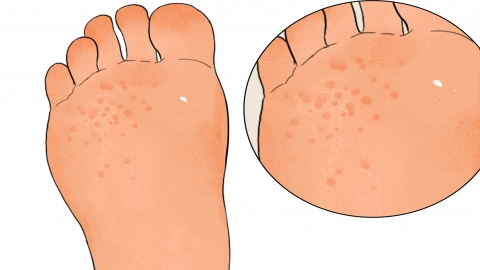How to treat foot sole pain
The sole of the foot usually refers to the bottom of the foot. Pain in this area may be caused by overuse, age-related changes, improper walking posture, plantar fasciitis, or heel spurs, and improvement can be made according to the specific situation. It is recommended to visit a hospital promptly and receive treatment under a doctor's guidance.

1. Overuse: Prolonged standing, walking, or exercising, especially while wearing inappropriate shoes, can lead to overuse of the muscles and fascia in the sole of the foot, causing pain. It is recommended to reduce foot activity and avoid prolonged standing or walking. Applying ice packs or heat packs may help relieve the pain, and physical therapies such as massage and stretching can aid recovery.
2. Age-related changes: As one ages, the fat pads on the soles of the feet gradually thin out, reducing the cushioning effect and making the feet prone to pain. Choose appropriate footwear with sufficient support and cushioning, and avoid walking barefoot for extended periods. Orthopedic insoles or customized arch supports can also enhance comfort.
3. Improper walking posture: Incorrect walking posture can cause uneven pressure on the soles of the feet, leading to long-term strain on the foot muscles and ligaments. It may also be accompanied by pain in other areas such as the knees and hips. Adjust your walking posture and maintain a correct gait; lose weight appropriately to control body weight; choose shoes with good support and cushioning.
4. Plantar fasciitis: Plantar fasciitis is a type of aseptic inflammation of the plantar fascia, commonly presenting as pain in the sole of the foot, especially noticeable when standing up in the morning or after prolonged rest. It may be accompanied by symptoms such as foot stiffness and limited mobility. Follow medical advice to take medications such as ibuprofen tablets, acetaminophen tablets, or celecoxib capsules to alleviate symptoms.
5. Heel spurs: Heel spurs may be related to chronic strain and inflammation of the plantar fascia. Spurs can press on nerves and blood vessels in the sole, causing pain, and may be accompanied by numbness and limited movement. Avoid prolonged standing or walking, and use medications such as nimesulide dispersible tablets, eperisone hydrochloride tablets, or meloxicam capsules under a doctor's guidance to relieve discomfort.
Maintaining good lifestyle habits and correct walking posture, along with performing foot muscle exercises and corrective training, can help restore normal foot function.






